Careers at CDC
CDC Engineers
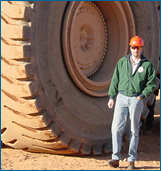
CDC employs more than 400 engineers. They cover a diversity of engineering fields from mechanical and biomedical to electrical and industrial hygiene and safety; some are lab-based, while others work in the field. All are dedicated to CDC′s public health mission as problem solvers.
Dean Ambrose, Safety Engineer, Pittsburgh Research Laboratory, NIOSH
As a safety engineer in NIOSH′s Pittsburgh Research Laboratory, Dean Ambrose enjoys working with 3D computer models to solve health and safety issues regarding machine and operator interactions. Ambrose, a former Air Force engineer, spent 19 years in the US Bureau of Mines until his organization became part of CDC/NIOSH 10 years ago. He has a bachelor′s degree in electrical engineering and has completed post-graduate studies in systems management, 3D computing, and emergency management.
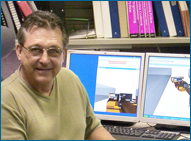
After his federal laboratory was transferred to CDC, Ambrose studied the agency to figure out what it does and how he could contribute. And contribute Ambrose has—using computer simulations to examine safe use of different mining techniques and equipment. By combining computer tools with laboratory and field observations, he has developed and optimized operational designs as well as engineering control interventions to reduce traumatic work injuries and work-related musculoskeletal disorders in mines. His biggest challenge? "Dealing with constant funding changes and constraints and keeping and finding qualified professionals to do the work," says Ambrose. He advises engineers interested in public health to hone their skills and gain professional experience in the private sector or military beforehand.
"If one enters government service early in their career, pursuing post graduate studies are good; however, try not to specialize too early because today′s specialized opportunities open and close very quickly."
Jennifer Topmiller, MS, Mechanical Engineer/Team Leader, Engineering and Physical Hazards Branch, Division of Applied Research and Technology, NIOSH
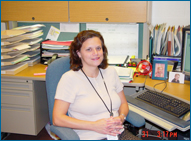
Ever wonder about the chances of catching a pathogen from a fellow airline passenger while flying? Jennifer Topmiller, an 18-year NIOSH mechanical engineer, has spent much of her work life focused on how to use engineering controls to reduce those risks, particularly as they relate to the potential transmission of pathogens such as tuberculosis and measles among passengers and crew in the air.
"My current work on aircraft cabins is very challenging. The greatest challenge in engineering control work comes from trying to find a solution that will work technically, be accepted by workers and the company management, and be economically feasible," says Topmiller, who joined NIOSH upon completing her BS at the University of Kentucky. After five years at CDC, she returned to the university to complete her master′s degree in Mechanical Engineering through CDC′s long-term training program. Her other NIOSH work has included working on controls for woodworking machinery, where her group helped develop relatively simple controls that dramatically reduced worker exposure to respirable wood dust. Currently, a large portion of her time is spent supervising a group of engineers and industrial hygienists and their associated projects.
"It is rewarding to help people be safer and healthier at work," she says. "Many Americans spend a large percentage of their lives at their jobs. They have a right to expect that their health will be protected while they are working."
Michael Washington, PhD, Industrial and Systems Engineer, Health Services Research and Evaluation Branch, NIP
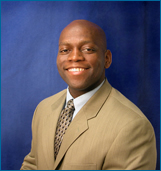
As the only engineer in NIP, Michael Washington is always challenged to explain to co-workers his role.
"They have confused me with being a statistician or economist, and while I have completed projects using my statistical and economical skills, we are all different. I constantly try to explain the value of engineering tools to health and public health," he explains.
Washington joined CDC in 2000 after being the first engineer to complete the Dr. Steven M. Teutsch Post-Doctoral Fellowship in Prevention Effectiveness and Health Economics. He currently is evaluating mass vaccination clinics around the country, and recently conducted a study using basic forecasting techniques to justify changing the Vaccine for Children funding calculation and allocations, and it suggested we increase our funding request from $1.05 billion to $1.63 billion in 2005. "This was one factor that convinced Congress to increase our funding," he recalls. He has worked internationally providing GIS and statistical support.
Washington first got into healthcare during college when he realized he could apply engineering tools to make hospitals more efficient. He has an MS and a PhD in Industrial Engineering, focusing on health systems, from the University of South Florida.
"I see so much that engineers can bring to public health outside of traditional centers for research engineers like NCEH/ATSDR and NIOSH," he says.
Cherie Estill, MS, Industrial Hygiene Supervisor, Division of Surveillance, Hazard Evaluations and Field Studies, NIOSH

"An engineering degree can be stepping stone into many career fields. It gives you a good scientific, technical background that enables you to solve all kinds of problems," says Cherie Estill, who supervises industrial hygiene work in NIOSH′s Division of Surveillance, Hazard Evaluations and Field Studies (DSHEFS).
Most recently, Estill oversaw the design and construction of a chamber for evaluating sampling methods for B. anthracis (anthrax). In the past, she studied workers who pick blueberries. Her recommendations led to improving the process by redesigning the rake used to manually harvest the blueberries in simple ways that will reduce the risk of potentially disabling musculoskeletal injuries while maintaining productivity. These recommendations are now in place in many locations in Maine, where Estill did her work.
She advises that engineers work on their interpersonal skills by taking communication, technical writing and public speaking classes. "These are skills that are not required in the curriculum but are needed to make our work known and understood by non-engineers," she says.
Ren G. Dong, PhD, Team Leader/ Senior Research Engineer, Health Effects Laboratory Division, NIOSH
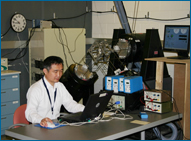
Repeated body vibrations can lead to health problems, as many truck, bus and construction vehicle drivers as well as workers who operate drills, saws and other equipment know all too well.
"If the vibration intensity and exposure duration exceeds a certain value under certain conditions such as temperature and noise, the vibration could cause a series of disorders in the vascular, neurological and musculoskeletal systems," says Ren Dong, who has a PhD and MS in mechanical engineering.
Dong should know: he and his team of engineers in NIOSH′s Engineering and Control Technology Branch work to reduce the risk of exposure and health effects of human vibration. Their work has helped improve several national and international standards on this topic. They are in the process of developing new technologies for better detecting the disorders, reducing the exposure intensity, and developing training strategies to prevent the incidence of vibration-induced disorders and injuries.
"To achieve these goals requires multi-disciplinary researchers," says Dong, who, along with other colleagues, has published more than 40 journal articles on the topic. Prior to coming to CDC six years ago, Dong conducted extensive engineering research for the railway industry. He believes engineers are critical for many research fields in safety and health.
"The research is not just to understand the problems and mechanisms of diseases, but also to develop new technology and devices. To effectively resolve practical safety and health problems requires the efforts of both engineers and scientists."
Bill Lindsley, PhD, Biomedical Engineer, Health Effects Laboratory Division, NIOSH

Everyone knows coughing can spread infection to others. But is there a mask or respirator effective at preventing the spread of infection? That′s a fundamental question Bill Lindsley, biomedical engineer in NIOSH′s Health Effects Lab in Morgantown, W.Va., wants to answer as part of his work studying aerosols, or small airborne solid and liquid particles.
"Surprisingly little information is available about how effective different masks are at blocking dissemination of cough-generated aerosols," he says, adding that his group recently develop a simulated cough system to test the ability of surgical masks and N95 respirators to intercept cough-generated aerosols.
"Aerosol research is a new field for me; it′s challenging keeping up with technology as it grows and changes as new experimental techniques supersede older ones," says Lindsley, who has a PhD in Bioengineering and an MS in Ocean Engineering.
Before getting his PhD, he worked as an engineer, designing underwater equipment for the U.S. Navy. "My bioengineering degree has given me a good background in biology and how biological research is done. This helps me understand how aerosol exposures affect people′s health. It also gives me a much better appreciation for what my biologist and toxicologist collaborators are trying to accomplish and how best to work together."
In his free time, Lindsley does a different kind of collaborating—helping build houses for Mon County Habitat for Humanity in West Virginia.
Christopher Pan, PhD, Research Safety Engineer, Division of Safety Research, NIOSH
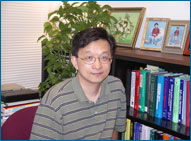
Collaboration within and outside CDC defines Christopher Pan′s work. Joining NIOSH in 1995, he currently leads two ongoing research projects in the Division of Safety Research in Morgantown, W. Va., while serving as an adjunct professor in the Department of Industrial and Management Systems Engineering at West Virginia University.
"I enjoy using my engineering knowledge and multidisciplinary expertise to collaborate with researchers in academia and industry to develop innovative methods and technologies in the area of occupational safety and health," says Pan.
His current work focuses on preventing falls among aerial lift operators in the construction industry, and identifying risk factors leading to musculoskeletal and traumatic injuries among package-delivery drivers. The work involves 18 team members across four NIOSH divisions and 11 partners outside CDC.
"The hazards and risks that workers take to support their families are not simple or trivial," says Pan. "To make these environments safer requires thinking in non-traditional ways, using the most sophisticated software and advanced engineering approaches and drawing on the talents and skills of a host of professional colleagues," he adds.
Get email updates
To receive email updates about this page, enter your email address:
Contact Us:
- Centers for Disease Control and Prevention
1600 Clifton Rd
Atlanta, GA 30333 - 800-CDC-INFO
(800-232-4636)
TTY: (888) 232-6348
24 Hours/Every Day - cdcinfo@cdc.gov

